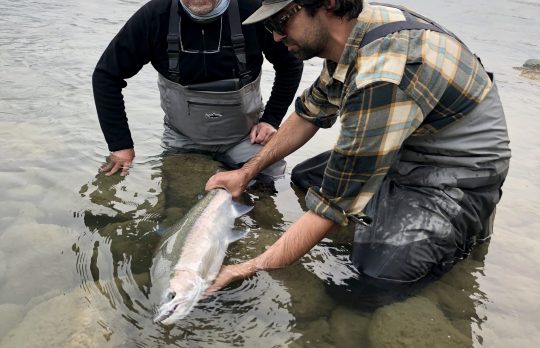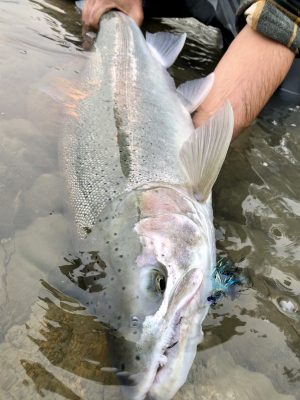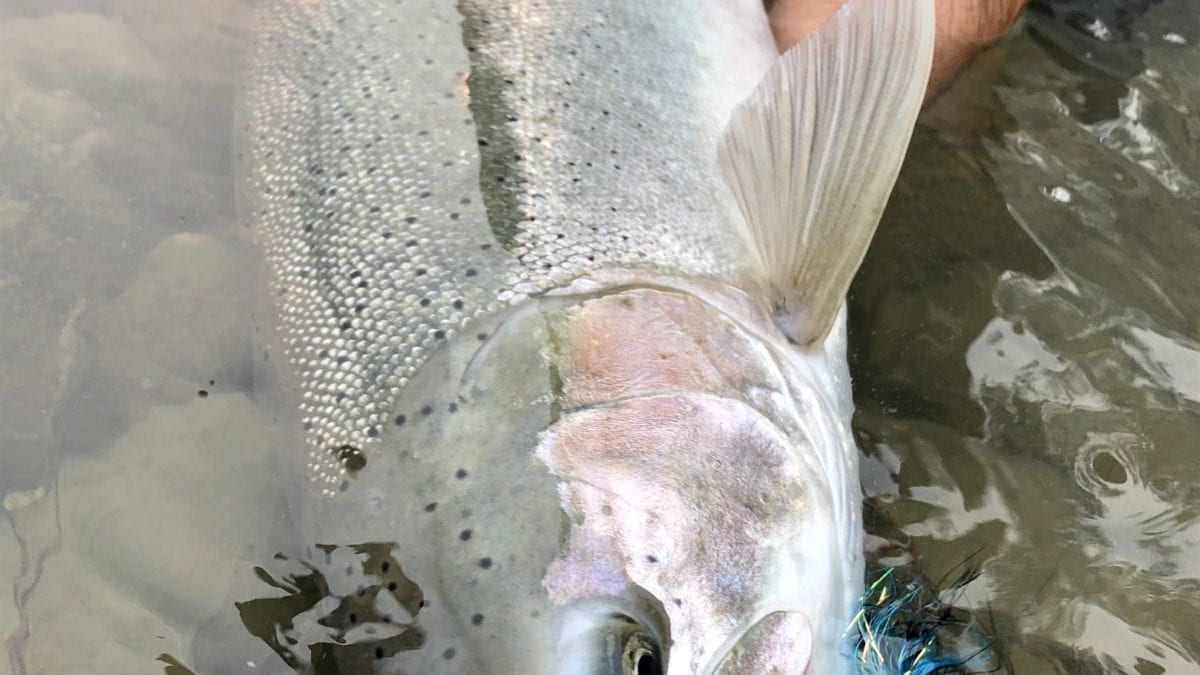Wednesday’s Wild and Wet Winter – Week 6
It’s Wednesday’s Wild and Wet Winter … a CalTrout, Keepemwet Fishing, and Lost Coast Outfitters initiative celebrating California’s wild winter steelhead.
This week Jeff Hickman, KeepemWet Fishing Ambassador offers some thoughts on photographing winter steelhead.

“Taking good pictures while fly fishing can be difficult. Throw wild winter steelhead in the mix and it becomes on par with winning a Powerball jackpot. Challenging weather and challenging fish make for a tough combo. Fogged and/or a wet lens, low light and fish that are legendary for being elusive, tough to predict and rarely cooperate for a photo. That is why I love it.
I’m an amateur cell phone photographer. It is an enjoyable side hobby for me while on the river guiding. I keep my iPhone in a Lifeproof case as it gets wet daily on the river. This compact setup fits in my chest or wader pocket and is easily accessible for me to take photos when I see the right moments. I also keep a small microfiber towel handy to keep the lens and my glasses clean.
My number one priority is treating and handling the fish with care and respect. This comes before getting a photo. Some fish don’t want their picture taken, and I don’t force it. If they want to go or are acting defiant or stressed, I will simply let them go. If they are calm and cooperative, I will take photos until they are ready to swim free.

When people catch steelhead they are always ecstatic. It is important to calm down and relax before handling a steelhead. Don’t forget to breathe! If you are calm when handling them, they are often calm. If you are rushed and panicky so too are they. Often times putting the palm of my hand over their eyes can relax them also.
My modo is to keep the fish submerged in clean water pointed upstream, breathing. I use a wide basket, soft nylon-mesh net. This helps me land fish sooner to minimize fatigue. Some nets damage the fish, splitting their fins etc. This is unacceptable to me.
It is possible to take great pictures with fish in the water or right on the surface of the water. Often times the water’s surface adds a really cool look to the photo. After all, fish look best in their natural settings.
If and when it is time to lift the fish (camera person is ready) I like to only see the eye come out of the water and only briefly, this keeps water moving through the gills. I try to focus on the fish’s eye making that the main subject. I tap the shutter button very rapidly. Maybe one in 20 is in focus. It is better to do two or three quick partial lifts than holding them out of the water where they can’t breathe.
Each fish has unique qualities. I always look for those and if possible enjoy photographing them. I also try to move the camera around and capture different angles all while rapidly tapping the shutter. Often times the photos that I like the best are ones I didn’t expect to come out at all.
As a guide with a very keen interest in wild fish conservation, I take it upon myself to help educate and inform clients about the importance of keeping fish in the water. Winter steelhead populations are under pressure up and down the entire Pacific Northwest. By helping convince more folks to commit to KeepemWet Fishing fish handling best practices, I hope we can lessen the pressure on these spectacular fish.”
Jeff and his wife Kathryn are the owners and operators of Kimsquit Bay Lodge on BC’s Dean River and Fish the Swing, an Oregon based operation focused on swinging flies for summer and winter steelhead.
————————————————————————————————————
CalTrout: to learn more about California winter run steelhead
Keepemwet Fishing: to learn more about Keepemwet principles
Lost Coast Outfitters: blog on many things fly fishing related





